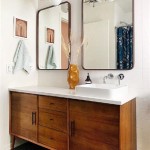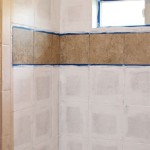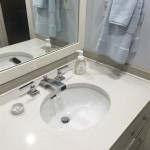Do I Need Special Ceiling Paint For Bathroom?
The question of whether specialized ceiling paint is necessary for a bathroom is often debated among homeowners and painting professionals alike. Bathrooms, by their very nature, are environments characterized by high humidity and fluctuating temperatures. These conditions present unique challenges to painted surfaces, particularly ceilings, making the choice of paint a crucial factor in the longevity and appearance of the finished result. While standard paints may offer initial aesthetic appeal, they often lack the specific properties required to withstand the rigors of a bathroom environment.
This article aims to provide a thorough analysis of the considerations involved in selecting the appropriate ceiling paint for a bathroom. It will explore the specific challenges that bathrooms present, outline the properties of specialized bathroom paints, and compare these to the characteristics of standard paints. Furthermore, it will delve into the potential consequences of using the wrong type of paint and provide guidance on making an informed decision based on individual bathroom conditions and budget.
Understanding Bathroom Challenges: Humidity, Condensation, and Mold
The primary challenge in a bathroom is the prevalence of moisture. Showers, baths, and even handwashing contribute to elevated humidity levels. This humidity condenses on cooler surfaces, including the ceiling, creating a breeding ground for mold and mildew. Mold and mildew not only pose health risks but also can cause significant damage to the painted surface and the underlying drywall. Standard paints often lack the necessary resistance to prevent their growth, leading to unsightly stains, peeling, and ultimately, the need for costly repairs. The constant cycle of condensation and evaporation can also weaken the paint film, causing it to blister or crack, further compromising its protective barrier.
Temperature fluctuations also play a critical role. The rapid changes in temperature during and after showers or baths cause the ceiling to expand and contract. This expansion and contraction can stress the paint film, potentially leading to cracking or peeling, especially if the paint is not flexible enough to accommodate these movements. Furthermore, bathroom ceilings are often exposed to direct splashing, particularly near showers and tubs. This exposure can cause discoloration or staining if the paint is not specifically formulated to resist watermarks and soap scum.
Another factor to consider is ventilation. While exhaust fans are designed to remove moisture, they are not always fully effective, especially in older homes or bathrooms with inadequate ventilation systems. This incomplete removal of moisture exacerbates the problems associated with humidity and condensation, increasing the risk of mold growth and paint degradation. Therefore, even with a functional exhaust fan, selecting a paint with inherent moisture resistance is a prudent measure to protect the ceiling.
Properties of Specialized Bathroom Ceiling Paints
Specialized bathroom ceiling paints are formulated with specific additives and resins to enhance their performance in high-humidity environments. The key properties that distinguish these paints from standard paints include moisture resistance, mold and mildew resistance, and durability. Moisture resistance is achieved through the use of tightly cross-linked polymers that create a barrier against water penetration. This barrier prevents water from seeping into the drywall, which can lead to structural damage and mold growth. Mold and mildew resistance is typically imparted by incorporating biocides into the paint formulation. These biocides inhibit the growth of mold and mildew on the painted surface, providing long-term protection against staining and health hazards. The efficacy of these biocides can vary depending on the specific product and manufacturer.
Furthermore, bathroom-specific paints often exhibit enhanced durability and scrubbability. This is particularly important in bathrooms where surfaces are frequently cleaned. A durable paint film can withstand repeated washing without losing its color or sheen, ensuring a long-lasting and aesthetically pleasing finish. Scrubbability refers to the paint's ability to resist damage from scrubbing with detergents and cleaning agents. Paints with high scrubbability ratings are less likely to develop burnishing (shiny spots) or fade after cleaning.
Another important aspect of specialized bathroom paints is their ability to maintain their color integrity over time. Standard paints can yellow or fade in response to prolonged exposure to moisture and UV light. Bathroom paints are often formulated with UV absorbers to prevent discoloration and keep the ceiling looking fresh and clean for longer. Some bathroom paints also offer enhanced adhesion to prevent peeling or blistering, even under extreme temperature fluctuations and humidity levels. This is achieved through the use of specialized primers or self-priming formulations that create a strong bond between the paint and the substrate.
Comparing Standard Paints vs. Bathroom-Specific Paints
While standard paints may be suitable for other areas of the home, they typically lack the specific properties required to withstand the harsh conditions of a bathroom. Standard paints often have a lower moisture resistance, making them susceptible to water penetration and mold growth. They may also lack the biocides necessary to inhibit the growth of mold and mildew. The paint film in standard paints may be softer and less durable, making them more prone to scratching, scuffing, and burnishing. This can lead to a shorter lifespan and the need for more frequent repainting.
Moreover, standard paints are often less resistant to temperature fluctuations and may crack or peel under the constant expansion and contraction of the ceiling. Their color stability may also be compromised, leading to yellowing or fading over time. While standard paints may be initially less expensive, the long-term costs associated with repairs and repainting can outweigh the initial savings. The cost of mold remediation can be significant, and replacing damaged drywall can be even more expensive.
Bathroom-specific paints, on the other hand, offer a more robust and durable solution that is specifically designed to withstand the unique challenges of a bathroom environment. While they may have a higher upfront cost, their long-term performance and protective properties can save money in the long run by reducing the need for repairs and repainting. The peace of mind that comes with knowing that the ceiling is protected against mold and mildew is also a valuable consideration. Therefore, while the initial temptation to use a standard paint may be strong, carefully weighing the costs and benefits is crucial.
Furthermore, consider the finish of the paint. While matte finishes are often preferred for their ability to hide imperfections, they are also more porous and susceptible to moisture penetration. Semi-gloss or gloss finishes, while more reflective, offer better moisture resistance and scrubbability. A satin finish can provide a good compromise between aesthetics and performance. The choice of finish should be based on the specific conditions of the bathroom and the desired aesthetic appearance, but prioritizing moisture resistance is crucial. Proper surface preparation is also paramount regardless of the paint chosen. Cleaning, priming and repairing any existing damage will improve the paint's adhesion and longevity.

Best Paint For Steamy Bathroom Ceiling Eco Inc

Ceiling Paint For Bathroom Prestige Painting Gta

Best Paint For Steamy Bathroom Ceiling Eco Inc

The Guide To Painting Your Bathroom Ceiling By Mira Showers

25 Beautiful Bathroom Ceiling Ideas

Ceiling Paint For Bathroom Prestige Painting Gta

Ceiling Paint What To Know Before You Buy Forbes Home

How To Choose The Right Type Of Bathroom Ceiling Paint

Ceiling Paint For Bathroom Prestige Painting Gta

Discover The Differences Between Wall And Ceiling Paint
Related Posts







